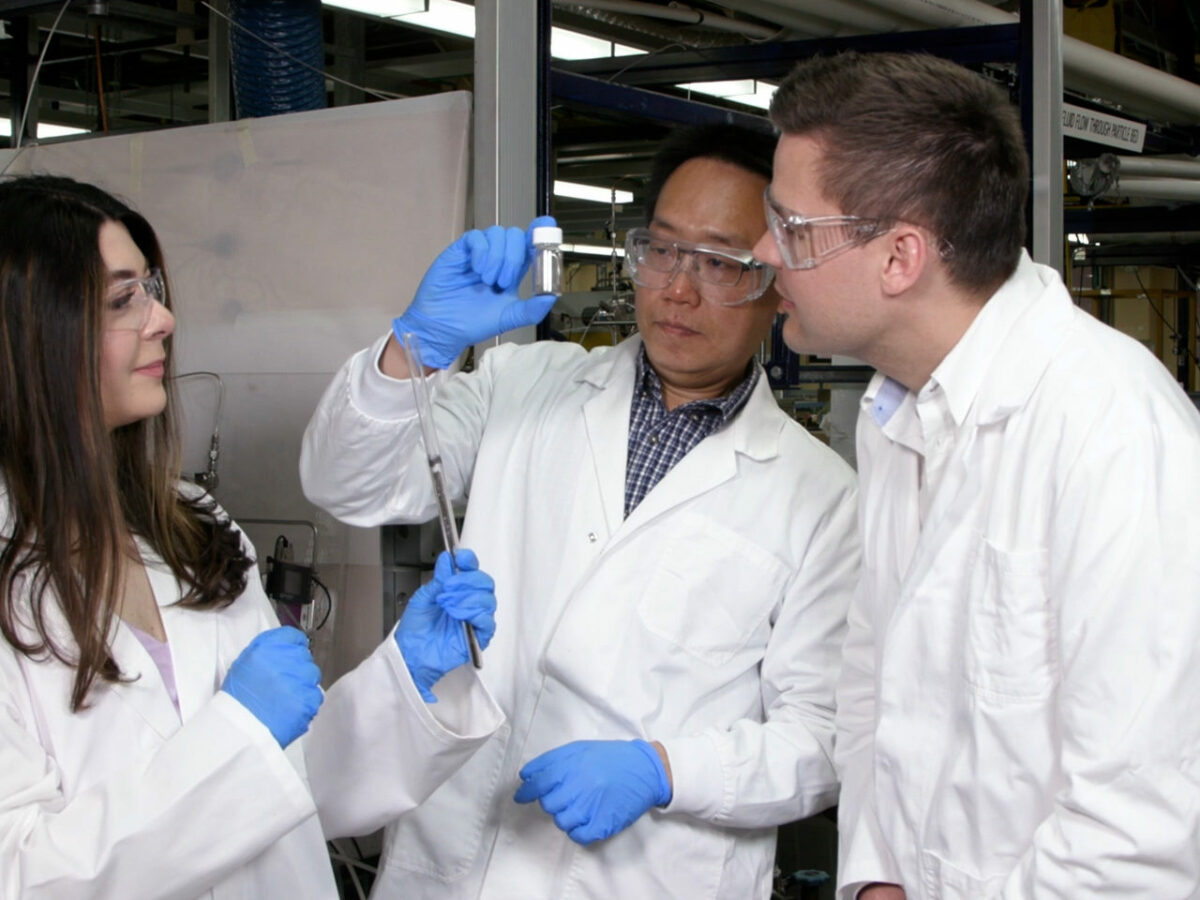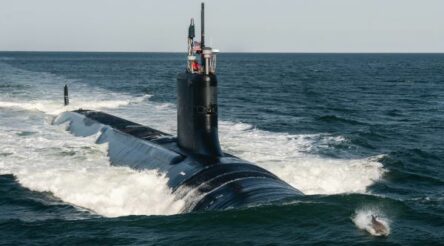Researchers look to move metal bubble bath carbon capture into industry

This month an Australian research team announced progress on a new method for carbon capture and storage.
It described their process as injecting CO2 into a bath of gallium-based liquid metal heated to between 100 and 120 degrees Celsius, with the gas rising “just like bubbles in a champagne glass” and turning into solid carbon flakes in under a second, ready to be collected.
A provisional patent has been applied for and the process is detailed in Energy & Environmental Science.
The team is in a $2.6 million R&D collaboration with ABR, with the next step to take a proof-of-concept to a “prototype the size of a shipping container.”
According to RMIT, the work is suited to integrating into the operations of plants owned by cement and steel makers and others.
@AuManufacturing spoke to Dr Ken Chiang, Senior Lecturer in chemical engineering at the university, who leads the project with the university’s Dr Torben Daeneke.
@AuManufacturing: For context’s sake, what does your research background involve?
Dr Ken Chiang: I’m a chemical engineer. I joined RMIT back in 2016. Before that, I worked at CSIRO for nine years, and I worked on a lot of natural gas projects, as well as on hydrogen generation and carbon dioxide utilisation. That’s where I accumulated some of the relevant experience in this space and led me to the current research that I’m doing at RMIT.
@AuManufacturing: I saw an old story from 2019 about your university’s researchers turning carbon dioxide back into coal. Were you a part of that?
Dr Ken Chiang: No. I think that was done by my colleague Dr Torben Daeneke, who is also my collaborator on the current topic we’re talking about.
He was working with another researcher who was at RMIT at the time, but that process was slightly different from the one that we are talking about today. I wasn’t involved in that project.
@AuManufacturing: Have you had many enquiries since the news about your carbon capture work last week?
Dr Ken Chiang: We have definitely received a lot of interest from different levels: people contacting us from industry, local and international academics, students who are looking for opportunities to pursue a higher degree by research. We’ve been overwhelmed!
@AuManufacturing: Tell us about integrating your processes within a factory, which is what you’re hoping to do with it.
Dr Ken Chiang: I think the beauty of this process is the simplicity of the reactions. It’s contacting carbon dioxide gas with a liquid bath of metal which is non-toxic and relatively easy to handle. In terms of engineering, design, scale up and operability, we believe this process is quite easy to manage.
The chemistry involved is also very simple. Definitely we do understand there is no one single bullet for all industry problems, but we believe that the chemistry involved and also the ease of operability will make this process quite adaptable and repurposable for different programs.
@AuManufacturing: How durable is the liquid metal catalyst against contamination? Is this something that you’d need to change out regularly?
Dr Ken Chiang: Similar to many other processes involving a catalyst, the liquid metal that we are dealing with is definitely subjected to different types of contamination. At this point in time, if we look at, let’s say, solid contaminants, we have confidence that things like particles can be easily separated out from our liquid metal bath. One of the merits of the process is that things with lower density, for example carbon, will separate themselves because of the density difference, because of the buoyancy force. This is why we’re utilising these properties to help us to recover carbon.
There might be some other chemical contaminants and these vary from process to process. We have to basically spend time to study some specific contaminants from different systems and the effect on our liquid metals.
@AuManufacturing: Is the material expensive and/or difficult to synthesise?
Dr Ken Chiang: Yes and no. The good thing about gallium is that it’s non-toxic. I realise the price of gallium might be higher compared to some other metals. But I think this is based on the fact that the market is demanding high purity gallium. But we are not restricting ourselves to ultra high-purity or electronic-grade gallium in our process. There is some tolerance in the system and we can use lower-quality gallium. Which could lower the price of our process.
We have some preliminary data suggesting that some metal contaminants may not affect the process efficiency dramatically.
@AuManufacturing: How does it compare to other capture and storage methods and how much cheaper does it need to be viable? The release compares it against liquefying and burying CO2.
Dr Ken Chiang: It is a bit premature, in my opinion, to compare it with other processes. Commercialised carbon capture process options have gone through very rigorous processes of economisation. At this point our process is fairly new and there is room for us to optimise the operating parameters.
@AuManufacturing: There is more low-hanging fruit to pick?
Dr Ken Chiang: Yes, definitely. In the current applications, what we are trying to target is to use carbon dioxide to produce good quality carbon that we can use for other purposes, for example electronics or batteries, and maybe for industry to use this carbon to blend with their products to make them greener. It should be seen as an alternative option to help turn CO2 to high grade, high value carbon.
@AuManufacturing: How should companies get in touch if they are interested in what you’re doing?
Dr Ken Chiang: We’re open to talk to any interested potential industry, and they can either contact me or my colleague, Dr Daeneke.
Picture (Left to right): PhD researcher Karma Zuraiqi, Dr Ken Chiang and Associate Professor Torben Daeneke (supplied)
Subscribe to our free @AuManufacturing newsletter here.
Topics Technology
@aumanufacturing Sections
Analysis and Commentary Awards Defence Manufacturing News Podcast Technology Videos










